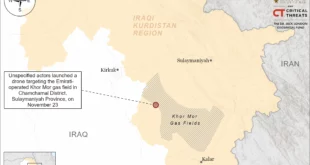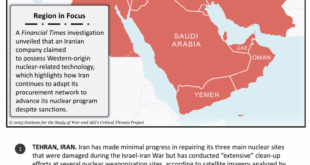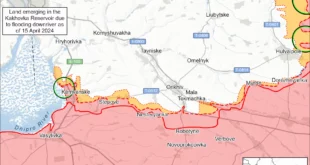At the dawn of 2023 approximately a year ago, President Volodymyr Zelensky effusively declared that Ukraine was on course to a “year of victory” against the Russian Federation for a war launched by the latter in late February 2022. Almost 24 months after the Russian invasion, Kyiv and its NATO allies are nowhere near defining what victory would constitute.
Three key factors have contributed to Ukraine’s faltering military campaign: Firstly, blurred or ill-defined objectives; secondly, the Ukrainians, not entirely of their making, have been condemned for the insufficient application of military power and an operational strategy that involved a flawed counter-offensive; lastly, Ukraine’s allies have become increasingly divided over the war and the extent of support that should be extended to Ukraine, despite recent efforts to overcome internal resistance.
Muddled objectives
Right from the outset the United States (US)-led North Atlantic Treaty Organisation (NATO) countries have fallen short of securing an outright victory against the Vladimir Putin-led Russian Federation for its invasion of Ukraine. Washington’s muddled objectives were perfectly reflected in US Defence Secretary Lloyd Austin’s statement in April 2022: “America’s goal for success [is to see] Ukraine remain a sovereign country, a democratic country, able to protect its sovereign territory.” Austin asserted that he wanted to see Russia “weakened”.
In concrete military terms, his comments meant very little, because they did not establish that Ukraine would be extended all the military support it needed to secure its territory from Russian control including the Donbas and Crimea that Moscow occupied through its proxies in 2014. If the status quo were to be restored that existed prior to 2014, then the military means necessary to regain the totality of Ukrainian territory would need to be significantly greater, which has not been the case through the course of the war since the very start of the Russian invasion in February 2022.
Alternatively, if the purpose were to restore the status quo that existed prior to Russia’s invasion on 24 February 2022, Ukraine’s objectives have been met, if not completely, with Russia largely confined to the territorial gains it made in 2014. Russia will retain, at least, de facto control of Donbas and Crimea if military hostilities between Kyiv and Moscow were to end today. Putin has made clear lately, that it would be “impossible” for Ukraine and its Western allies to retake all the military gains made by Moscow in Ukraine.
The point to underline here is that none of Ukraine’s or for that matter NATO’s objectives—restoration of the status quo that existed prior to 2014 nor the pre-invasion status quo of February 2022—have been fully met nor were the objectives clearly defined immediately following the Russian invasion in February 2022.
If anything, something as amorphous and fuzzy as “weakening” Russia has become the basis for supporting Ukraine militarily. In the process, it has left the Ukrainians frustrated and has turned them into cannon fodder even though Western powers contest this was their intent. Compounding all this, as is suggested in Austin’s statement, is the West’s commitment to extend full military assistance to the Ukrainians without actually doing so to regain all Ukrainian territory, including the Donbas and Crimea. Consequently, it makes the Ukrainians victims of Western fickleness and vicissitudes.
Means inadequate and Ukrainian operational blunders
Even if the objectives were muddled, the means or military commitments have been equally inadequate to achieve them. Even if we assume that the NATO powers led by the US were and remain at best militarily supportive of Kyiv to regain all territory lost since February 2022, which today Ukraine has by and large achieved, it was not consistently the case throughout the war.
The Americans vacillated over supplying Ukraine with high-end and potent weaponry such as High Mobility Artillery Rocket Systems (HIMARS). Indeed, the supply of HIMARS did not happen until several months following the Russian invasion. The same is true for supplying the Ukrainians with F-16 fighter jets and training pilots to fly them, which is now underway. Additional supplies such as the Skynex air defence system, ammunition for Leopard-I tanks, Armoured Personnel Carriers (APCs), 50 mobile satellite terminals, 16 Zetros tanker trucks, 25 Heidrun reconnaissance drones and 1,840 helmets are also being supplied to the Ukrainians by their German ally and NATO’s second largest member.
It is unclear whether this new infusion of capabilities will decisively alter the course of the war in favour of Kyiv. The US-led NATO allies’ fears of military escalation have so far determined the scope and extent of the capabilities provided to Kyiv, notwithstanding the supplies being made to Ukraine and US Secretary of State Anthony Blinken stating quite clearly that a ceasefire is unlikely anytime soon. Operational blunders by the Ukrainians have made matters worse for them. They should have concentrated military strength in the South, severing Russian supply lines to reinforce Russian deployments in Crimea in June 2023 instead of embarking on a counter-defensive attack.
US divided and allies divided, but progress underway
The final factor afflicting Ukraine’s military campaign against Russia is the division between the US and the European members of the Atlantic Alliance. The latest evidence suggests there could be progress in the US Congress by the end of January 2024 on a US$110-billion funding measure for Ukraine’s war effort—which has stalled in the US Congress due to Congressional House Republicans blocking its passage.
On the European side of NATO, Hungary may also agree to withdraw its veto on a 50-billion euros aid package for Ukraine. Both Ukraine and its Western allies have to consider the consequences of pressing ahead with offensive action that involves deep thrusts into Russian-controlled Ukrainian territory, despite additional NATO military aid flowing to Ukraine. If a ceasefire is improbable at this point, it might be necessary to impress upon the Ukrainians to strengthen their existing defences with the military aid that is being given, which can be combined with very limited or tactical offensives rather than replicating the overambitious and botched counter-offensive they launched in June 2023.
If Kyiv jettisons the riskier strategy to secure key territorial breakthroughs, for all practical purposes, the Zelensky-led government will have to abandon its quest to regain all the territory it lost to Russia in 2014. On the one hand, it may also turn out to be decisive to the extent that Ukrainian defences are established robustly and Russia is compelled to abandon its aim to take more territory in Northern and Western Ukraine. On the other hand, for the Ukrainians and their NATO allies, restoring the status quo ante that preceded 2014 will require a substantial and disciplined military effort to succeed against entrenched Russian defences. The downside with the restoration of Ukraine’s pre-2014 borders with Russia is that Kyiv and NATO will prolong the war whose outcome, at best, remains uncertain at this stage.
 Eurasia Press & News
Eurasia Press & News



